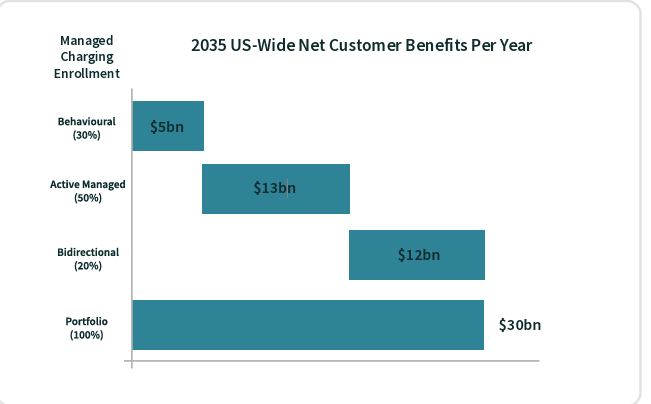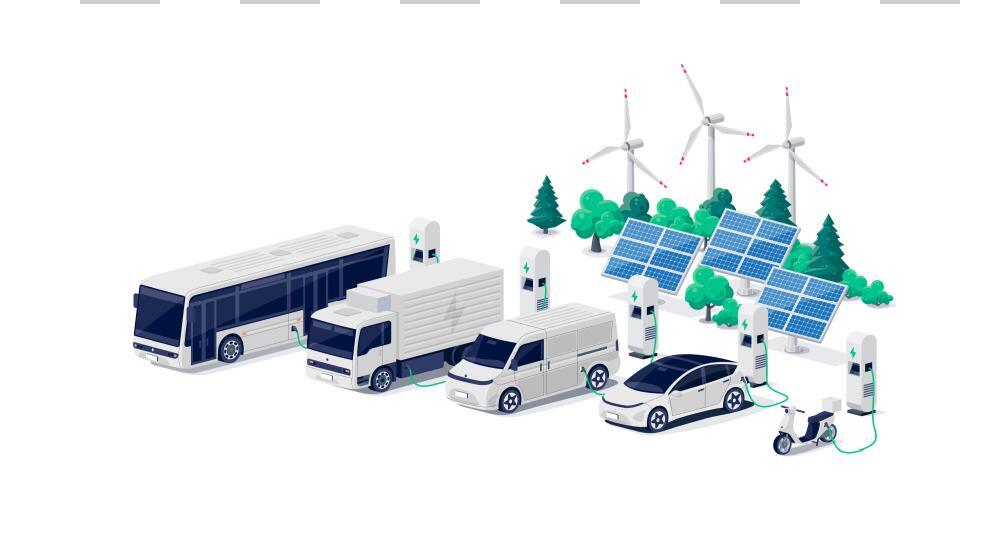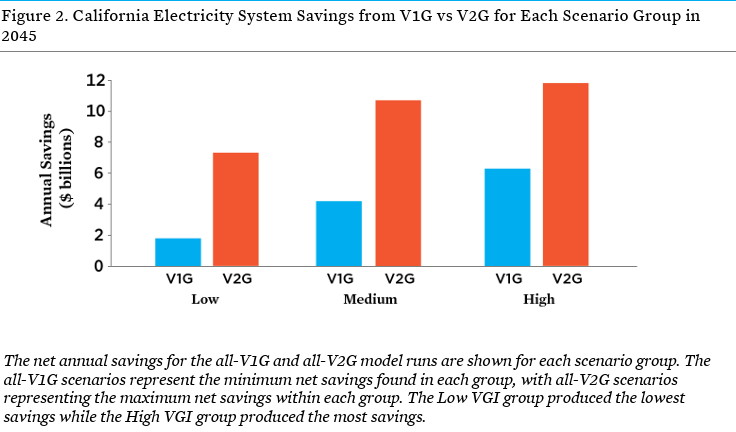- Electric vehicles don’t just cut pollution — they can also cut electricity bills. New research shows that EVs generate more utility revenue than they cost to serve, helping lower rates for all customers — even those who don’t drive one.
- As managed charging and vehicle-to-grid technologies expand, the savings will only grow. By charging when electricity is cheapest and feeding power back to the grid, EVs can help stabilize the grid, reduce the need for costly infrastructure, and make electricity more affordable for everyone.
After more than a decade of little change, U.S. electricity demand is on the rise due in large part to energy-guzzling AI data centers, more intense heat waves and the electrification of buildings. This growing demand, together with other factors, is pushing electricity rates up. Utilities and regulators are looking for solutions — and a growing body of research points to electric vehicles as part of the answer.
EVs can lower electricity rates for everyone Share on XEV charging helps spread out fixed utility costs, putting downward pressure on rates over time. In addition to cutting air and climate pollution, EVs can also make electricity more affordable for everyone.
Why EVs are good for rates
As utilities face rising costs from aging infrastructure and shifting demand, ratepayers feel those costs in their monthly bills. The question is: can new sources of electricity demand — like EVs — make things better or worse?
The evidence is clear: EVs tend to make things better. In general, they generate more revenue for utilities than it costs to serve them, and that extra revenue helps lower rates for all customers. EVs by nature of their charging needs put downward pressure on rates, and while this habit can be optimized for greater results, optimization is not necessary for EVs to benefit ratepayers. Over time, managed charging and vehicle-to-grid technologies unlock even more savings by reducing expensive grid upgrades and avoiding reliance on dirty, costly peaker plants.
Think of it this way: EVs don’t just clean up the air — they can help stabilize the grid and keep costs down for everyone, even people who don’t drive one.
EVs increase utility revenue
The simplest way EVs help is by bringing in more revenue than it costs to serve them. Most of the expenses of running the electric grid are fixed over the short term — the wires, substations and power plants we already have. When more people plug in EVs, they spread those fixed costs across a larger customer base, lowering the cost per unit of electricity.
And this isn’t just theory. A study of EV use between 2011 and 2021 found that EV drivers generated $3.1 billion more in revenue than it cost utilities to serve them. Most of this “rate surplus” is returned to customers by mitigating the amount of utility rate increases. While the beneficial rate impacts were concentrated in those states with higher EV deployment, every state experienced some downward pressure due to EVs over the ten-year period.
A forward-looking study by California’s Public Advocate’s Office reached a similar conclusion. It looked at the cost to update infrastructure for all three major utilities (San Diego Gas & Electric, Southern California Edison and Pacific Gas & Electric) and found that EVs had serious potential to put downward pressure on rates. Other studies from the EPA, California Public Utility Commission and University of Berkeley have all reached similar conclusions. These conclusions hold true whether or not EV charging is optimized. In essence, some EV charging even done sub optimally is better for rates than no EV charging. However, by optimizing the charging and, in some cases, the discharging of EVs, additional value for rate-payers can be unlocked.
Managed charging and load flexibility
The next level of benefits comes when utilities and EV drivers coordinate when cars charge. This “managed charging” helps avoid charging during peak hours — those hot summer afternoons, for example, when electricity is most expensive and the grid is most stressed.
According to a study by EV energy, managed charging could account for $18 billion of a $30 billion annual savings opportunity by 2035, as reflected by the behavioral and active managed charging bars in the graph below. By shifting EV charging away from peak times, utilities can retire expensive peaker plants, defer transmission and distribution upgrades and keep costs down for everyone.

How this scenario was calculated: The net customer benefits are calculated by taking the average of each value range, multiplied by the 2035 enrollment rates and the total number of 78.5 million EVs. Standard program administration costs were subtracted. The projected 10% bill reduction is based on these net benefits as a percentage of the total projected U.S. residential electricity market ($300 billion in 2035).
Another promising tool is flexible interconnection agreements — arrangements where EV fleets agree in advance to limit or shift charging during high-demand periods. This approach delays costly grid upgrades, helps customers get projects online faster and speeds up revenue for utilities. That means downward pressure on rates for all.
Vehicle-to-Grid (V2G)
Finally, EVs can go beyond smart charging and actually send electricity back to the grid through V2G technology. While still emerging, the potential is huge.
V2G can provide valuable services like frequency regulation — keeping the grid stable minute by minute — and reduce the need for costly backup power plants and storage. A Union of Concerned Scientists study found that managed charging and V2G combined could save $1.8 to $11.7 billion per year, depending on adoption levels. In high-adoption scenarios, V2G could cut residential peak demand by up to 33 percent, reducing the need for expensive new infrastructure and putting even more downward pressure on rates.
The bottom line
EVs are more than just a climate solution. They are a powerful economic tool that can make electricity more affordable for everyone. The research is consistent: EVs already generate more revenue than they cost, and as managed charging and V2G technologies scale up, the savings will only grow.
For policymakers and regulators, this creates a straightforward case: supporting EV adoption is good for the environment, good for the grid and good for ratepayers’ wallets. For advocates, it is critical that we emphasize the environmental, health, and perhaps most importantly, the rate benefits EVs bring to the table.
The message is simple: when we electrify transportation, we don’t just cut pollution — we also lower electricity bills. That’s a win for everyone.












